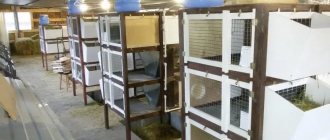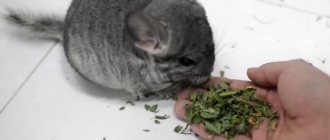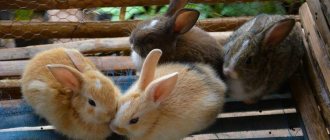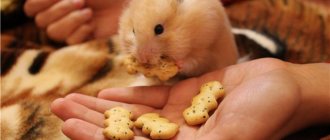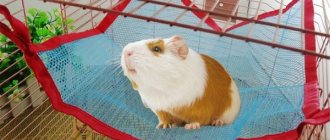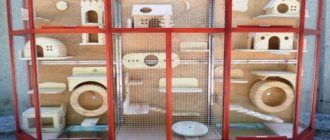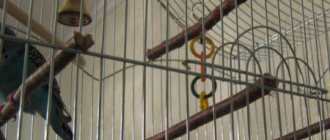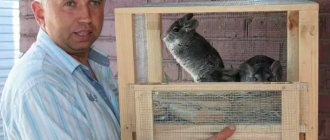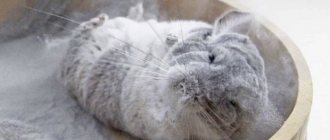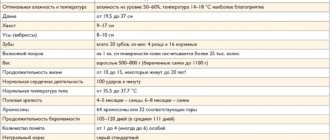Conditions of detention, business plan, profitability
In nature, you can only find chinchillas with a gray color.
But over the past hundred years, with the help of genetic engineering, specialists have managed to breed chinchillas with purple, beige, white and other colors. Article navigation
- Brief overview of the market
- What you need to know about chinchillas
- Food for chinchillas and necessary equipment
- Chinchilla cages
- Room
- Registering a business, drawing up a business plan
- Chinchilla breeding business
- Sales of chinchilla skins
- Nuances and tips
In this article we will analyze the organization of a small chinchilla farm. Starting investment – from 600 to 900 thousand rubles (depending on the number of animals and a number of other conditions). If desired, this business can be easily scaled by increasing the livestock depending on demand. Key questions: “How difficult is it?” and “Is breeding chinchillas profitable in modern conditions?” These are the ones we will answer first.
Equipment
Minimum set of equipment for breeding chinchillas:
- Cage, 2 pieces - 16,000 rubles
- Hopper feeder, 2 pieces - 500,000 rubles
- Automatic drinker, 2 pieces - 700,000 rubles
- Bathing suit, 2 pieces - 800'000 rubles
- Total - 18,000 rubles
Chinchillas do not breed in cramped conditions, so the cage should be spacious.
cage for chinchillas Having a small container with coarse sand is a must, since the animals love to clean themselves. The second cage will be needed for the placement of newborn chinchillas and their mother. During pregnancy, females are placed in a cage with a wooden nesting box.
Brief overview of the market
The exact numbers are unknown, but as of 2022, there was one large industrial enterprise, as well as just over a hundred small ones. But if we talk about fur, then most of these small enterprises should not be considered as competitors. The fact is that many people breed chinchillas solely for the purpose of selling live animals.
At one time there was a popular scheme that worked approximately according to the principles of network marketing. The idea was simple: raise animals and sell them to other farms that are just starting out. Of course, such enterprises had no long-term prospects.
The demand for chinchilla fur in Russia is much higher than the supply. But it’s worth making an important caveat: high-quality fur. Low-quality skins are in great demand in Russia (products made from them are much cheaper), but if we talk about the top segment, then this is in less demand. There are two reasons:
- in the studio, the highest quality skins are usually purchased only for specific orders;
- Fur products made from top category chinchilla fur are often preferred to be purchased from European manufacturers.
But in any case, it is better to focus on high quality skins. Even if in Russia the level of supply catches up with the level of demand (which is still a long way off), then farm products can always be sold to European countries.
What you need to know about chinchillas
Detailed and comprehensive information can be found in thematic books; here, for the sake of familiarization, we will tell you the most necessary things. What you need to know to organize your own chinchilla farm.
These are not the most fastidious animals, but if you need good fur, you need to create a number of conditions:
- ventilation;
- regular cell cleaning;
- maintaining optimal temperature conditions;
- high-quality food (including essential vitamins).
The quality of the fur will depend on all factors; none can be neglected. Also, do not forget that slaughtering, sanding and dressing no less strongly influence the quality of the final product. If you are seriously interested in this business, then you should think about slaughtering animals and further actions with the skins right now. Here you definitely need an experienced person who will at least teach you or your staff how to do it correctly. In addition, for some it is simply a difficult moment from a psychological point of view.
There are three ways to purchase high-quality chinchillas:
- Purchase in Russia from other animal farms. However, it is difficult to find really good chinchillas. We are talking about a large population, and not about a few animals.
- Import from Europe. You can immediately bring a sufficient number of chinchillas. The cost of one animal will be from 8 to 13 thousand rubles (for regions of the European part of Russia).
- Growing your own livestock by crossing the highest quality animals. The method is very long with an initially small number of animals. In addition, it requires fundamental knowledge and experience and is not suitable for beginners.
The first two options remain, each of which has its own disadvantages. In the first case, they will almost certainly try to sell you bad animals. In the second case, chinchillas are difficult to import, especially in modern conditions. However, customs rules regarding the import of animals are a topic for a separate article. But in our opinion, the second option is preferable. The first one should not be excluded either, but we recommend reading all available literature on chinchillas and paying very close attention to the selection of breeding stock.
On average, the cost of one good animal is from 10 to 12 thousand rubles. Count on exactly this amount. Whatever is cheaper is often not very suitable for breeding for fur.
Food for chinchillas and necessary equipment
There are several types of food for chinchillas (let’s say right away that there are usually no problems with purchasing it):
- Feed for main stock. The cost is around 50 rubles per kilogram.
- Food for young animals and pregnant females. The cost is 70 rubles per kilogram.
These are special feeds that contain all the necessary additives (minerals and vitamins). One animal eats about 11 kilograms of food per year. That is, the cost of food for one chinchilla will be approximately 550 rubles.
You also need to know the following facts about these animals:
- Females produce an average of 2 litters of 2 puppies per year. Their pregnancy lasts about 108 days. Retain reproductive functions for an average of seven years.
- Sexual maturity occurs at the age of seven months.
- Animals that are 11–12 months old are slaughtered.
Chinchilla cages
The size of a cage for two animals should be 50–60 by 60 cm, with special requirements for height. It should be at least 70 cm. It is worth installing two or three shelves in the cage. The distance between the rods should not be more than 15 mm, maximum 16–17. For adults, you can make larger gaps, but for newborns, 20 millimeters will be enough to go for a walk.
There are cages of different designs, sometimes even display cases are made of glass and metal. Such structures are easy to clean, but they are quite expensive. The easiest way is to buy ready-made cages for chinchillas. Their cost is from 10 to 15 thousand rubles, which, in our opinion, is too expensive. The optimal solution would be to simply order the cages (or make them yourself), in which case you will have to spend 3-4 times less. When drawing up a business plan for breeding chinchillas and the corresponding calculations, budget an amount of around 5,000 rubles.
Assume that one chinchilla requires an area of at least 0.36 square meters. m. Design the cages according to exactly how you plan to keep the animals. Currently, the most popular scheme is 4+1 (this content is called polygamous). These are four females and one male. Each cage has four cells where females and their young live. In addition, the passages to these cells are usually equipped with barriers (females can sometimes show aggression towards the male).
The cells will also require:
- Bathing suits that are necessary for animals. Firstly, they feel comfortable, and secondly, their fur is always clean and beautiful. The cost of one is from 400 to 500 rubles.
- Automatic drinkers. Cost from 200 to 300 rubles.
- Bunker feeders. Cost from 400 to 500 rubles. There are different designs, but in this case the difference is not fundamental.
Thus, you should first calculate the cost of a cage for keeping five chinchillas in the region of 6,500 rubles.
Room
Chinchillas are unpretentious animals, but for their successful breeding it is highly desirable to maintain certain conditions:
- air temperature 20 °C (deviation of 2-3 °C is allowed);
- air humidity around 60%;
- absence of direct sunlight and drafts.
There are no other special requirements. The premises can be rented, or you can build them on your own summer cottage (many do this). Some manage to keep chinchillas in an apartment by making shelves with cages that resemble ordinary cabinets, but this is a very controversial decision. Firstly, it will not be possible to keep a large number of animals (if we are talking about breeding chinchillas for fur). Secondly, living with these animals will not be very comfortable. They are nocturnal and in large numbers simply will not let you sleep. There are also sanitary considerations. And the neighbors may not be happy.
Therefore, the only options remain to rent premises in a non-residential building or build your own. If you have land (and electricity), then you should definitely choose the second option. Yes, in this case the initial investment will increase, but in the long run it will be much more profitable.
Equipment for the premises
Air conditioning and heating systems are required. The latter is often chosen as convectors that do not burn oxygen in the room. Calculate the cost based on the area of the room. On average, for 50 sq. m. you will have to spend 30–35 thousand rubles.
Large chinchilla farms, which are located in separate premises, always have generators in case of power outages. If in summer it is quite possible to do without this (these animals can feel comfortable at temperatures up to 40 ° C), then in winter serious problems can arise. Therefore, they also install an alarm system that notifies about problems with electricity.
When building a farm, there is often a desire to save on such trifles, but we do not recommend this. When working with living organisms, such savings can be fraught with huge losses.
Features of the formation of chinchilla fur
Thick and beautiful chinchilla fur begins to form from the moment of birth. Newborn puppies are born fully formed, covered with baby fur, which may be unevenly distributed over the body. It is usually thicker in the neck and back area than on the tummy and sides.
At the age of three, puppies enter the first period of growing up: the fur becomes silkier, the skin is still fragile, but acquires elasticity. At this age, young animals undergo their first molt, which is accompanied by the production of melanin. At the end of the molt, the fur will take on its adult color and the skin will turn bluish.
Starting from six months of age, the period of fur maturation begins. Typically this period lasts about three to four months.
Young animals that are not intended for breeding are slaughtered at the end of the maturation period. Further cultivation is not profitable: the animals stop growing, there is a high risk of fur damage in games, as well as the appearance of skin parasites.
Registering a business, drawing up a business plan
For a business breeding chinchillas (or any other fur-bearing animals), the choice is usually made in favor of a peasant farm (peasant farm) or private subsidiary plot (personal subsidiary plot). However, there are a lot of nuances here, let’s look at the main ones.
Private household plots, at first glance, may seem like an excellent option, since there are no taxes. But there will be problems with marketing the products. Not all enterprises are ready to work with individuals. For large volumes, this option is not at all acceptable.
Peasant farm seems to be a more interesting option. Simply because in almost every region there are various benefits and support programs. Unfortunately, they are mostly aimed at more traditional agriculture. However, check this issue with your local administration.
An alternative to peasant farms can be registration of individual entrepreneurs (OKVED code will be 1.25.2) with the choice of Unified Agricultural Tax (Unified Agricultural Tax) as the taxation system. There is no point in choosing other options, since the unified agricultural tax implies many benefits. Therefore, if there are no serious support measures for agriculture in your region, there is no big difference between peasant farms or individual entrepreneurs. It’s definitely not worth choosing private household plots. Although small farms often operate without registration at all. Until the moment you sell your first skins, you are not formally conducting any business activity. But this is only suitable for small chinchilla farms that do not have hired staff.
Now let's move on to drawing up a business plan for breeding chinchillas. Everything is simple here . For example, we take the content of 4+1.
Cost of cage and additional accessories + cost of five animals + annual feed consumption. If we take the average figures that we gave in the article, we get 56,500 rubles. plus 2700 rub. per year for food for five animals. In total, if you decide to keep 50 chinchillas on your farm, you will need 592,000 rubles. for the first year.
If you look at the cost of skins, you can find offers to purchase for 2000–3000 rubles, which seems somewhat discouraging, but here we are talking about poor quality. Chinchilla skins of the highest quality cost around 5,000–6,000 rubles. In some cases it is 9–12 thousand rubles, but these are really special cases.
Please note that we do not take into account the costs of building and equipping the premises (or renting them), staff salaries, and electricity bills. Consider these figures yourself, based on prices in your region.
If you are planning a farm for 500 or 1000 animals, then there is no need to buy that quantity. With a polygamous placement scheme, you can get at least 16 puppies per year from one cage. That is, if you bought 50 chinchillas, then in a year their number will increase by at least 160. By the way, this path is the most correct, since it will allow you to independently control the quality of the breeding stock, weeding out bad individuals. The work is quite tedious and complex, but in the long term this is the only approach worth recognizing as correct.
Unsuitable animals may be sold as pets. Their cost is from 5 to 10 thousand rubles.
It’s easy to create a business plan for chinchilla breeding yourself; you just need to clarify the numbers for your region. The calculations are very simple; in addition, a thorough market research and study of competitors is not required.
Is it profitable to open a chinchilla farm - expert opinion
We have already talked a lot about the chinchilla business. But how do things work in practice? Let's find out from our good friend Andrey (31 years old), who has been raising and selling fluffy animals for more than three years.
“My business started, as they say, out of the blue. I used to just be into rodents, so I decided to buy a family of chinchillas as pets. I gave away the first offspring to relatives. It was they who suggested that I contact a pet store and negotiate the sale of subsequent litters. And now, for the fourth year now, I have been seriously studying these cute creatures. Now I sell them to restaurants and fur salons.
There were almost never any problems with the content. Sales have been established for a long time. True, I had to hire an assistant: since childhood I have not been able to watch animals being killed. Today, the funds from their sale not only cover all the needs of the farm, but also allow me to live comfortably,” Andrey shared.
Chinchilla breeding business
It’s definitely worth saying a few words about this, since at one time this idea was very actively promoted. We have already mentioned network marketing above. In the case of home breeding of chinchillas, this is not entirely true, but the scheme turned out to be similar. The main hope was to sell animals to those who also intended to engage in similar activities. Of course, such a scheme is not suitable for a full-fledged (even small) business.
It is not worth seriously considering breeding chinchillas at home for the purpose of selling them alive. It’s absolutely impossible to earn a lot of money here, and besides, the market is already saturated with offers for the sale of live animals. If you don’t believe me, you can check it yourself by looking at the ads at least on Avito.
Breeding for fur at home also makes no sense. We wrote above that keeping a large number of animals at home is very problematic, in addition, the volumes will be insignificant. From one animal you can earn up to 5.5 thousand rubles (under ideal conditions and without taking into account the cost of cages), and if you keep 10, even 20 chinchillas, then the annual income, frankly speaking, is not worth all the hassle.
How to choose a supplier
An important factor for the success of the project is the purchase of the first individuals. Chinchillas are expensive, but they can generate income for a long time, since their reproductive functions last for 10-15 years.
Chinchillas are usually distinguished by color: twelve types of standard color and ten combinative forms. The most popular colors are standard gray or black.
To avoid making a mistake when choosing a pair of breeding chinchillas, contact professional breeders, not private owners. Hundreds of broodstock live in nurseries, which means that the risks of inbreeding are reduced. The estimated cost of purchasing two pairs of chinchillas will be 60,000 rubles.
The daily diet of chinchillas is practically no different from that of rabbits: feed, vegetables, herbs, vitamin hay, fish and meat and bone meal.
Sales of chinchilla skins
The main clients will be fur studios in big cities. In small towns it will be very difficult to find buyers. An alternative could be fur auctions, which are held, including in Europe. By the way, the demand for them is often twice as high as the supply. In practice, there are no problems with the sale of good chinchilla skins. You can also search for buyers on thematic resources, for example, on the website rosmex.ru.
There are also the following ways to sell not skins, but live animals:
- Unsuitable (culled) animals are sold to private individuals or sold to pet stores. There is no point in keeping them, and if there are no buyers, then they should simply be euthanized (based on economic feasibility). Be prepared for the fact that you will have to cull quite a lot of animals. On the other hand, this will allow you to obtain only high-quality fur. This is called "breeding work."
- Sale of breeding animals. We wrote prices: from 10 to 12, in some cases, 15 thousand rubles. The buyers are other farms. It’s 2-3 times more profitable than selling skins, but you shouldn’t count on constant demand here.
Dressing chinchilla skins
Dressing chinchilla skins begins with removal, and here it is important that no fat, blood or water gets on the fur. Otherwise, the workpiece will be damaged. The removed skin is cleaned with the blunt side of a knife from remaining fatty tissue, blood clots, and films. Then it is laid out on a flat and clean surface and the tail and paws are aligned. After the skin is cleaned and smoothed, it is stretched on a frame to dry.
Typically, the drying process takes no more than two days at a room temperature of no more than +15 degrees. If processing is not planned immediately, then the skin can be placed in the refrigerator, where it will be stored for several months without loss of quality and integrity.
The processing process begins by preparing a mixture of nine parts salt and one part aluminum sulfate. The salt must be crushed, otherwise the crystals will scratch the delicate skin of the workpiece. The resulting mixture is mixed with fine sawdust from deciduous trees. If the skin is wet, the amount of sawdust is increased. For normal skin the ratio is:
- Two tablespoons of a mixture of salt and aluminum,
- Four tablespoons of sawdust.
The resulting mixture is sprinkled over the entire skin. The blanks are folded skin side to side and left for six days in a cool room with good ventilation, but without direct sunlight. The skins must be turned over every two days.
After the allotted time, the workpieces are shaken and hung on the crossbars to dry for another three or four days. After which they are stretched on a frame and cleaned of sawdust and salt residues.
Finished chinchilla skins can be stored in a regular cardboard box. Fold them in pairs inside with the flesh and cover them with regular newsprint.
